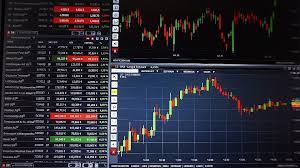
Effective Forex Trading Strategies for Success
When diving into the world of forex trading, having a well-defined trading strategy is critical to achieving success. In this article, we will explore various forex trading strategies that can help traders make informed decisions and maximize their profits in the increasingly competitive forex market. For more information and resources on forex trading strategies, you can visit forex trading strategies https://ex-zar.com/.
Understanding Forex Trading
Forex trading, or foreign exchange trading, involves the exchange of one currency for another with the aim of making a profit. The forex market is one of the largest financial markets globally, with a daily trading volume exceeding $6 trillion. Understanding the fundamentals of forex trading, including how currency pairs work, market trends, and economic indicators, is crucial for developing effective trading strategies.
Types of Forex Trading Strategies
There are several different types of forex trading strategies that traders can adopt, each with its own unique approach and set of tools. Below are some of the most popular strategies:
1. Scalping
Scalping is a short-term trading strategy that involves making multiple trades throughout the day to capitalize on small price movements. Scalpers aim to capture tiny profits on each trade, often holding positions for just a few seconds to minutes. This strategy requires a strong understanding of technical analysis and quick decision-making skills.
2. Day Trading
Day trading involves opening and closing trades within the same trading day to take advantage of intraday market movements. Day traders analyze market trends and use various technical indicators to identify potential entry and exit points for their trades. This strategy requires traders to stay glued to their screens and actively monitor their positions.
3. Swing Trading
Swing trading is a medium-term trading strategy that focuses on capturing price swings in the market. Traders using this strategy typically hold positions for several days to weeks, taking advantage of short to medium-term price movements. Swing traders employ both technical and fundamental analysis to make informed trading decisions.
4. Position Trading
Position trading is a long-term strategy where traders hold positions for extended periods, ranging from weeks to months or even years. This strategy relies heavily on fundamental analysis and the assessment of macroeconomic factors that can influence currency prices. Position traders often use broader charts and tend to make fewer trades compared to scalpers or day traders.
Technical Analysis in Forex Trading
Technical analysis plays a vital role in developing and implementing forex trading strategies. It involves analyzing historical price data and using various tools and indicators to forecast future price movements. Here are some key components of technical analysis:
1. Candlestick Patterns
Candlestick patterns provide visual insights into market sentiment and potential price movements. Traders often use patterns such as doji, engulfing, and hammer to identify potential reversals or continuations in the market.
2. Trend Lines
Trend lines help traders understand the direction of the market by connecting significant highs or lows. By identifying trends, traders can make more informed decisions about their entries and exits.

3. Indicators
Indicators such as Moving Averages, RSI (Relative Strength Index), MACD (Moving Average Convergence Divergence), and Bollinger Bands provide valuable insights into market conditions and potential trade signals. Traders often rely on these indicators to confirm their trading strategies.
Fundamental Analysis in Forex Trading
Fundamental analysis focuses on evaluating economic, social, and political factors that can influence currency prices. Understanding economic indicators, central bank policies, and geopolitical events is essential for developing a comprehensive trading strategy. Some key economic indicators to monitor include:
1. Interest Rates
Interest rates set by central banks have a profound impact on currency values. Higher interest rates typically attract foreign capital, leading to an appreciation of a currency.
2. Employment Data
Employment reports, such as Non-Farm Payrolls (NFP), provide valuable insights into the health of an economy. Strong employment data can lead to currency appreciation, while weak data may have the opposite effect.
3. Inflation
Inflation rates affect purchasing power and monetary policy decisions. Higher inflation may lead to an increase in interest rates, influencing currency values.
Risk Management in Forex Trading
No trading strategy is complete without a solid risk management plan. Effective risk management helps protect traders from significant losses and ensures long-term trading viability. Here are some key risk management strategies:
1. Set Stop-Loss Orders
Stop-loss orders automatically close a trade when the market moves against a trader’s position. This helps minimize losses and preserve capital.
2. Position Sizing
Determining the appropriate position size based on account size, risk tolerance, and trade strategy is essential. It helps limit exposure to any single trade.
3. Diversify Your Portfolio
Diversifying across various currency pairs and trading strategies can help mitigate risk. A well-diversified portfolio is less susceptible to significant losses from any individual trade.
Conclusion
Developing effective forex trading strategies is crucial for success in the dynamic forex market. Whether you choose to adopt short-term strategies like scalping and day trading or prefer the long-term approach of position trading, understanding market dynamics through technical and fundamental analysis will significantly enhance your trading performance. Additionally, implementing proper risk management techniques will help protect your capital and contribute to your long-term trading success. As you embark on your forex trading journey, remember that continuous learning, practice, and discipline are key components in becoming a successful trader.
Leave A Comment